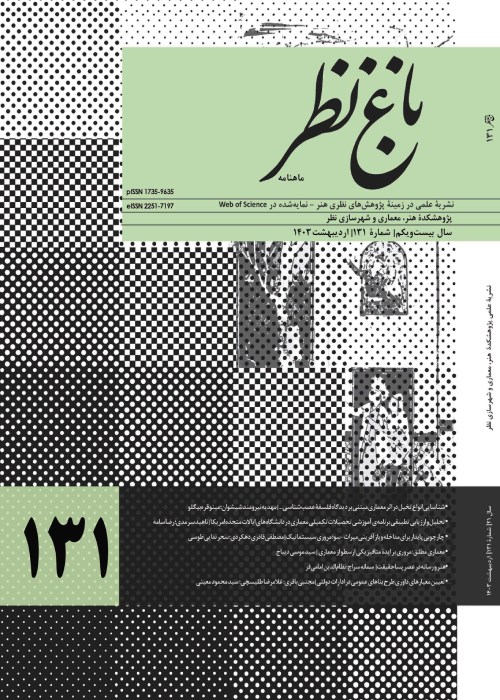A Study on Features of Safavid Avenues (Khiaban)
Author(s):
Abstract:
When you take a look at the history of urbanism and its different styles in Iran particularly the urban planning and architecture of the Safavid era, you will encounter the word khiaban. Khiaban is very similar to avenue in its modern sense in a way that you can consider the avenue as the modernized Safavid khiabans even though you can hardly find the idea in Iranian city planning.This article is meant to take an analytical look at the written and pictured documents to have a clear understanding of this element in Iranian architecture and find out its common principles as used in the Safavid period. The article has also tried to refer to ancient travelogue of European travelers and their descriptions of Iranian urban structures during the golden age of the Safavids. Special attention has been paid on their explanations of Safavid khiabans and the rules governing their construction. Noteworthy is that most of such khiabans are no longer existing or have gradually vanished over time. The current article presents the basic rules of constructing khiabans by relying on observations of five such structures as described in ancient transcripts and maps remaining from the Safavid era.These rules are then put into two main categories of functional and structural.Functional features include:1. Establishing a link between adjacent sites like kingly gardens and presenting gardens in a city scale. A real picture of this feature can be seen in a famous khiaban named Chahar Bagh in Isfahan.2. Providing a facility for citizens to spend their past time. The khiabans were even especially designed wideenough to enable citizens to have easy horse rides or do leisure activities like archery.3. Giving viewers a sense of appreciation to the magnificence of the king’s court that usually overlooked the khiabans. The khiabans were constructed in a way to have maximum impact on the viewers i.e. by planting two rows of trees on both sides of the way.The physical features: Like Persian gardens, the Safavid khiabans incorporate three elements of water, plant and structure:• Water: canals, ponds and fountains made a special attraction along the way. For example, Sharden talks about seven ponds in Charbagh in very exact details.• Plants: on the other hand, the regular rows of large trees like pine, plane tree and cypress brings a symbolic and affective regularity to the place.• Structure: this element has been used artistically at the beginning, the end and along the khiaban.Location in city planning: the Safavid khiabans were in later centuries located on suburbs and among the gardens in a way that made it possible to develop the city beyond the city walls. This was particularly evident in Charbagh, as the old part of the city through Bazzar goes to the new part of Naqshe Jahan plaza, and the plaza through Alighapou runs toward Chehel Sotoon and Hasht Behesht palace connects to Chahrbagh.
Keywords:
Khiaban , Safavi era , logbook
Language:
Persian
Published:
Bagh-e Nazar, Volume:8 Issue: 17, 2011
Page:
59
magiran.com/p918264
دانلود و مطالعه متن این مقاله با یکی از روشهای زیر امکان پذیر است:
اشتراک شخصی
با عضویت و پرداخت آنلاین حق اشتراک یکساله به مبلغ 1,390,000ريال میتوانید 70 عنوان مطلب دانلود کنید!
اشتراک سازمانی
به کتابخانه دانشگاه یا محل کار خود پیشنهاد کنید تا اشتراک سازمانی این پایگاه را برای دسترسی نامحدود همه کاربران به متن مطالب تهیه نمایند!
توجه!
- حق عضویت دریافتی صرف حمایت از نشریات عضو و نگهداری، تکمیل و توسعه مگیران میشود.
- پرداخت حق اشتراک و دانلود مقالات اجازه بازنشر آن در سایر رسانههای چاپی و دیجیتال را به کاربر نمیدهد.
In order to view content subscription is required
Personal subscription
Subscribe magiran.com for 70 € euros via PayPal and download 70 articles during a year.
Organization subscription
Please contact us to subscribe your university or library for unlimited access!


